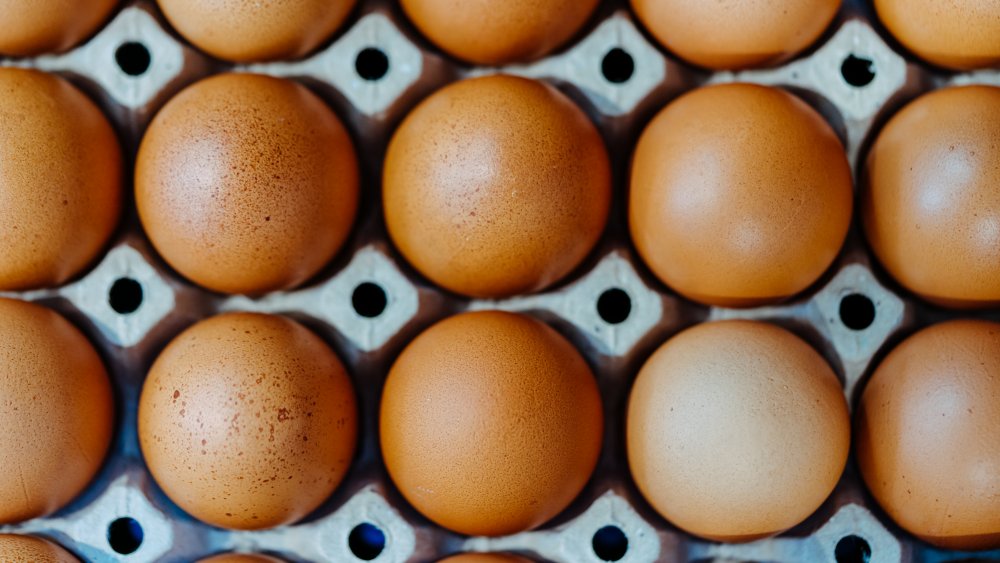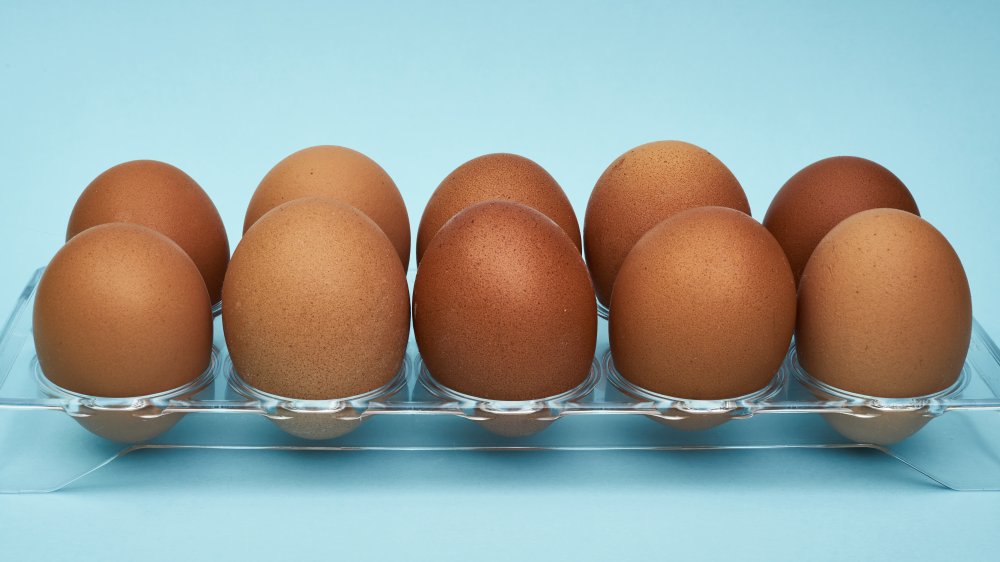You Should Always Crack An Egg On A Flat Surface. Here's Why
Hundreds (thousands? more?) of standard household baking and cooking recipes rely on an egg or two and that tiny sliver of shell is the bane of many home cooks' existences. While the "cracking an egg in one hand like a professional chef" trick requires some practice, there is also a simple way to prevent the introduction of bothersome eggshells into your dish at all.
Some people might think that cracking an egg on the side of a dish will result in a cleaner break, but the opposite is actually true. The best way to crack an egg is on a flat surface, like a countertop, which will allow the membrane to stay intact, and the smaller shell fragments will stick, while the rest of the egg plops into the intended vessel (via Reader's Digest). Of course, there's always the chance that things do not go exactly according to plan, so mitigation efforts can help as well.
Cracking eggs on the counter has multiple benefits
Many chefs also practice cracking eggs into separate bowls first and then mixing the eggs into the rest of the mix. This ensures that even if eggshell finds its way into the bowl, it's easier to fish out of the translucent raw egg white than it is out of a floury batter where it very well might blend in.
French cooking master Jacques Pepin, famous for his omelettes and crepes, says that there is another benefit of cracking eggs on the countertop instead of on the edge of a bowl: It helps to prevent food contamination (via Life Hacker). Raw eggs can carry salmonella and many cases of food poisoning are a result of carelessness and cross-contamination in the kitchen. Given that the dishes for which Pepin is famous are very egg-centric, it would stand to reason that the man has cracked quite a few eggs in his life and he might very well be on to something.

